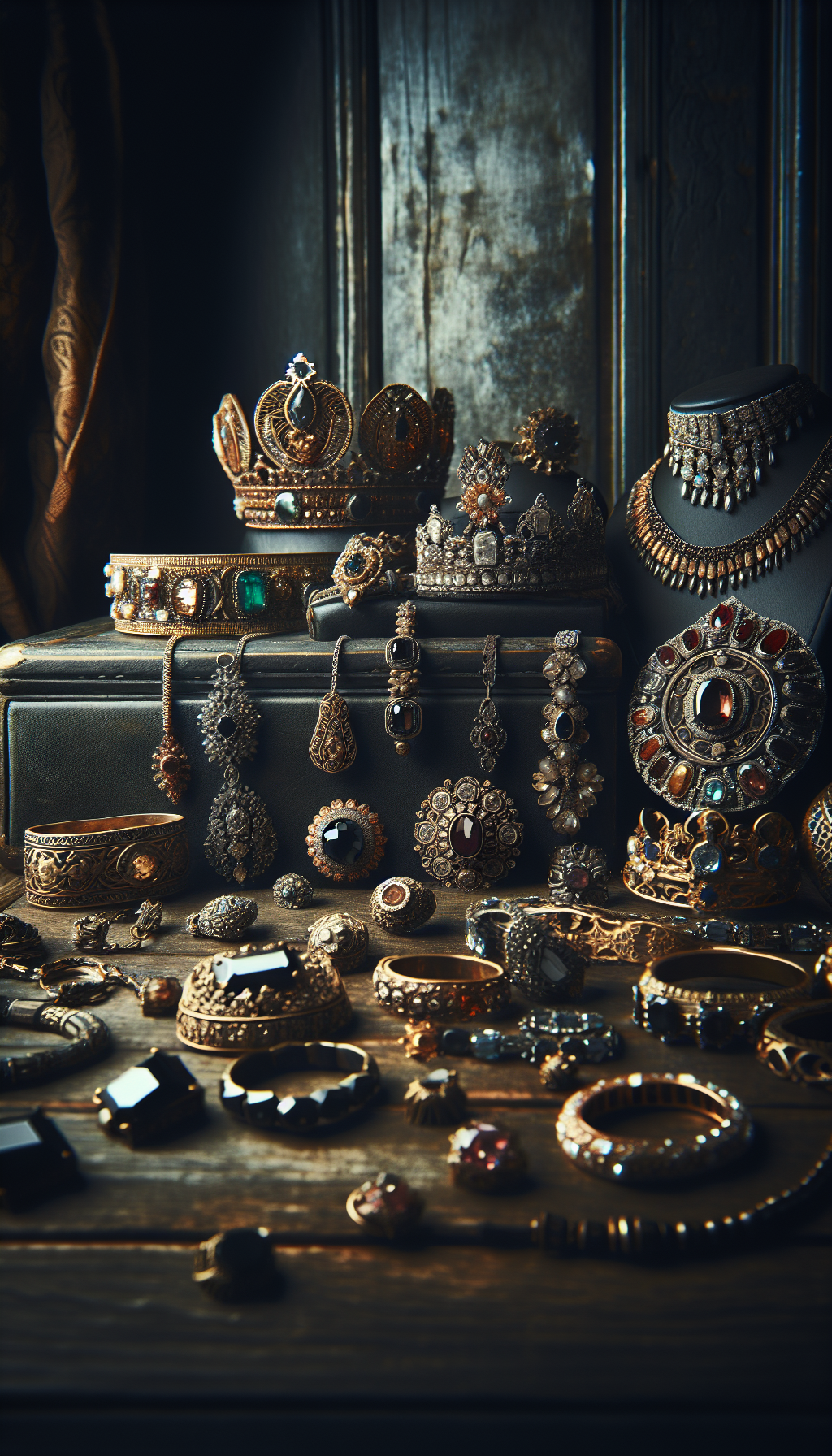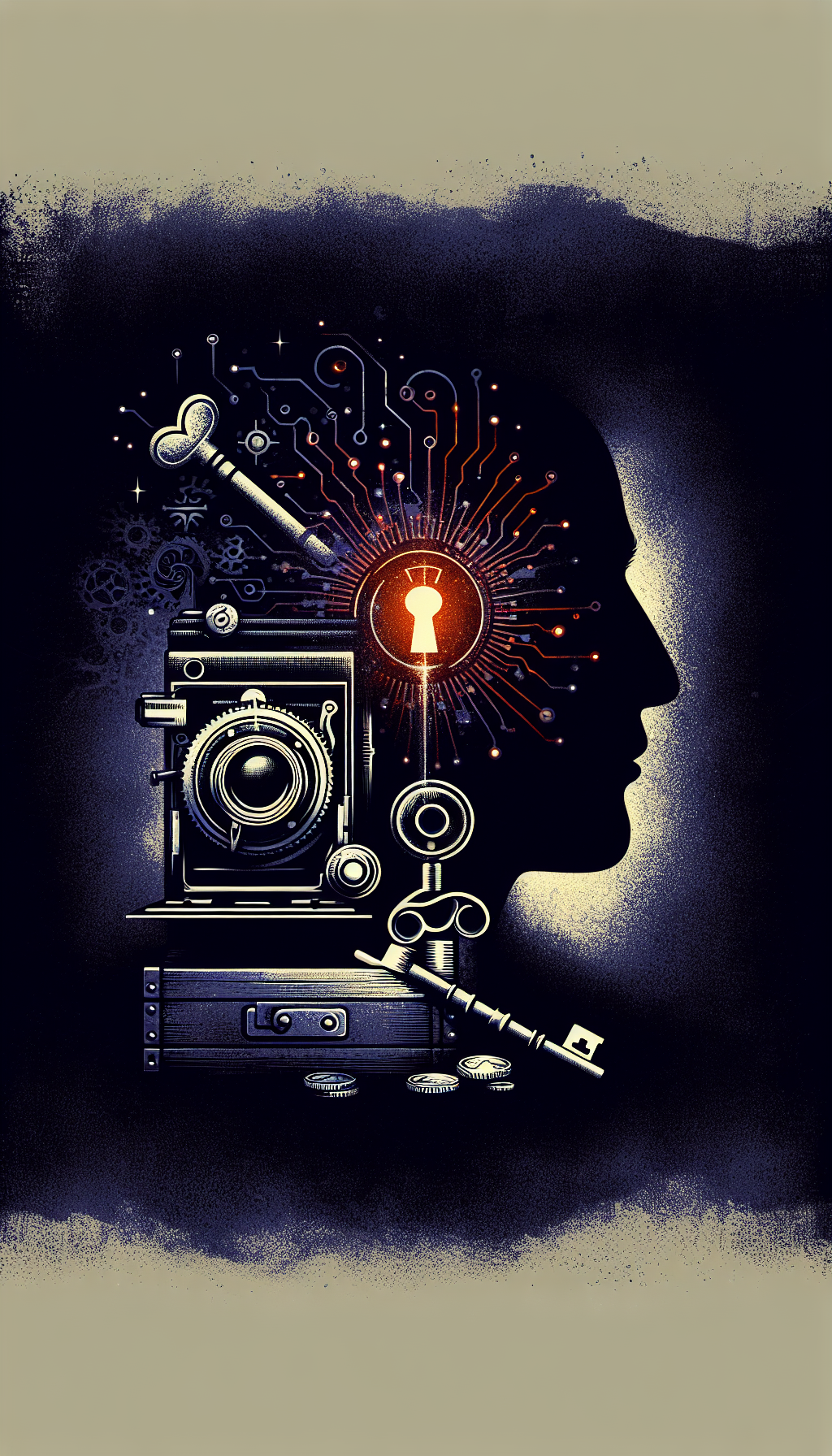Bayonets represent a fascinating intersection of military history, craftsmanship, and collectible weaponry. These blade attachments for firearms have evolved significantly over centuries of warfare, with each nation and era producing distinctive variations that tell stories of military innovation and combat tactics. For collectors, historians, and antique enthusiasts, identifying and authenticating old bayonets can be both challenging and rewarding.

This comprehensive guide will help you navigate the complex world of antique bayonet identification, covering key features, country-specific markings, valuation factors, and resources for further research. Whether you’ve discovered a family heirloom, are expanding your collection, or simply appreciate military history, understanding how to properly identify old bayonets will enhance your appreciation of these historical artifacts.
Table of Contents
- Understanding Bayonet Types
- Key Identification Markers
- Country-Specific Bayonet Features
- Dating Your Bayonet
- Bayonet Markings Guide
- Condition Assessment
- Valuation Factors
- Notable Collectible Bayonets
- Resources for Further Research
- Common Questions About Bayonet Identification
Understanding Bayonet Types
Bayonets have evolved significantly since their introduction in the 17th century. The major types include:
Socket Bayonets
Socket bayonets, which became standard in the late 17th century, feature a hollow socket that fits over the rifle barrel and a locking ring or clasp mechanism. These replaced the plug bayonets that had to be inserted into the barrel (rendering the firearm unusable as a shooting weapon when attached).
Sword Bayonets
These longer blade bayonets resembled short swords and became popular in the 19th century. Many feature distinctive grips, crossguards, and sometimes even a fuller (blood groove) running down the blade.
Knife Bayonets
Shorter than sword bayonets, these became standard in the 20th century as rifles became shorter and trench warfare made longer bayonets unwieldy. Many World War I and World War II bayonets fall into this category.
Spike Bayonets
These simple designs feature a thin, pointed blade with minimal or no cutting edge. They were popular with certain countries and periods, such as British No.4 rifles in WWII and later SKS rifles.
Bayonet Identification Quick Facts
Key Identification Markers
Mounting Method
How the bayonet attaches to the rifle is one of the most important identification features:
- Socket mounting: Common in 18th and 19th-century bayonets
- Muzzle ring with lug slot: Found on many 19th and 20th-century designs
- Spring-loaded mechanism: Common in 20th-century designs
- Unique attachment systems: Some countries developed proprietary mounting systems
Blade Profile
The shape and design of the blade can tell you much about a bayonet’s origin:
- Triangular blades: Common in early socket bayonets
- Yataghan curve: Distinctive curved blades popular in the mid-19th century
- Quillons: The presence and shape of the crossguard
- Blade length: Varied significantly by era and intended use
- Cruciform blades: Four-sided spike designs
Handle Design
Look closely at the grip material and construction:
- Wooden grips: Often seen on 19th and early 20th-century models
- Bakelite/plastic grips: Common in WWII and later bayonets
- Checkering patterns: Can be distinctive to certain manufacturers
- Metal handles: Some designs had cast or stamped metal handles
Scabbard
The scabbard can provide important clues:
- Material: Leather, metal, or composite materials
- Mounting hardware: Belt hooks, frogs, or other attachment methods
- Matching markings: Should correspond with those on the bayonet
Evolution of Bayonet Designs
- 17th Century
Plug Bayonets
Early bayonets that inserted directly into the barrel, preventing the firearm from being fired when attached. - Late 17th Century
Socket Bayonets
Innovation allowing the bayonet to be mounted without obstructing the barrel, enabling firing with bayonet attached. - 19th Century
Sword Bayonets
Longer blades resembling short swords, often with distinctive hilts and crossguards. - Early 20th Century
Knife Bayonets
Shorter, more practical designs that could double as utility knives, becoming standard in WWI. - Mid-20th Century
Spike Bayonets
Simple pointed designs that were economical to produce and lightweight, popular in WWII and Cold War. - Late 20th Century
Multi-purpose Bayonets
Modern designs incorporating wire-cutting capabilities, saw backs, and survival features.
Country-Specific Bayonet Features
United States
American bayonets often feature:
- Clear manufacturer markings (like “U.S.” or “Springfield”)
- Serial numbers that often match the rifle
- Distinctive designs like the M1905 (16-inch blade) for the M1903 Springfield rifle, later shortened to the M1 bayonet (10-inch) during WWII
- M1 Garand bayonets with their characteristic blade and handle profile
- M4, M5, M6, and M7 bayonets for the M1 Carbine and later rifles
Great Britain and Commonwealth
British bayonets typically show:
- Crown markings with inspector initials
- Broad arrow (pheon) mark indicating military property
- Pattern designations (like P1907 or No.4)
- Distinctive socket bayonets for Martini-Henry rifles
- Commonwealth variations often have country-specific markings (Australia, Canada, etc.)

Germany
German bayonets are identifiable by:
- Distinctive maker codes (“S/155”, “42”, etc.)
- Imperial crown or Nazi markings depending on era
- Sawback feature on some WWI examples
- S84/98 bayonets for Mauser rifles with characteristic mounting system
- Distinctive K98k bayonets from WWII with bakelite handles
France
French bayonets often feature:
- “Châtellerault” or other arsenal markings
- Distinctive yataghan-curved blades on 19th-century models
- Characteristic brass handles on some models
- Distinctive cruciform “épée-baïonnette” designs
Russia/Soviet Union
Russian and Soviet bayonets typically have:
- Cyrillic markings and date stamps
- Arsenal codes (like “Izhevsk” mark)
- Distinctive spike bayonets for Mosin-Nagant rifles
- Later AK-47 and SKS bayonets with characteristic designs
Japan
Japanese bayonets can be identified by:
- Arsenal markings (often with flower symbols)
- Distinctive hooked quillons on Type 30 bayonets
- Character markings indicating the era (Showa, etc.)
- Often lacking a fuller (blood groove)
Price Ranges by Country and Era
Approximate market values for bayonets in good condition (as of 2023)
</tbody>
</table>
Dating Your Bayonet
Date Stamps
Some bayonets feature direct date stamps, typically found:
- On the ricasso (the unsharpened portion of the blade near the hilt)
- On the cross-guard or pommel
- On the spine of the blade
- As part of a serial number sequence
Production Markings
Manufacturing codes can help date a bayonet:
- Maker’s marks changed over time and can be researched
- Inspector stamps often correlate to specific time periods
- Production processes (machining vs. hand-forged features)
Design Evolution
The design itself can indicate age:
- Socket bayonets are typically pre-20th century
- Sword bayonets were common in the 19th century
- Knife bayonets became standard in the 20th century
- Materials used for grips (wood, plastic, bakelite) changed over time
Historical Context
Consider the rifle the bayonet was designed for:
- Martini-Henry bayonets (1870s-1890s)
- Lee-Enfield bayonets (1890s-1950s)
- Springfield M1903 bayonets (early 1900s-1940s)
- Mauser K98k bayonets (1930s-1940s)
Bayonet Markings Guide
Primary Marking Locations
When examining a bayonet, look for markings in these areas:
- Blade ricasso (the unsharpened section near the hilt)
- Spine of the blade
- Cross-guard or quillon
- Pommel or butt cap
- Socket (on socket bayonets)
- Grip or handle scales
- Scabbard (often matching the bayonet’s markings)
Types of Markings
The main categories of markings include:
Manufacturer Marks
- Arsenal codes (e.g., “WKC” for Weyersberg, Kirschbaum & Co.)
- Factory symbols (flowers, stars, crowns)
- Country-specific maker’s marks
Military Acceptance Stamps
- Inspector marks
- Proof marks
- Acceptance symbols (crowns, eagles, stars)
Unit and Serial Numbering
- Regimental markings
- Rack or unit numbers
- Serial numbers (sometimes matching the rifle)
Monarchial or Government Symbols
- Royal cyphers (like “VR” for Victoria Regina)
- Imperial German crown
- Nazi swastika or eagle (1933-1945)
- Soviet hammer and sickle
Bayonet Markings Identification Checklist
Use this checklist to ensure you've examined all potential marking locations
- Blade ricasso (unsharpened section near hilt)
- Spine or back of blade
- Cross-guard or quillon area
- Pommel or butt cap
- Socket (if applicable)
- Grip or handle scales
- Scabbard body
- Scabbard mounts or fittings
International Marking Variations
Different countries utilized distinctive marking systems:
British and Commonwealth
- Crown over inspector’s mark
- Broad arrow (pheon) property mark
- Date and pattern designation
- Manufacturing facility code
German
- Imperial era: Crown over manufacturer code
- Nazi era: Eagle over code number (e.g., “42” for Mauser)
- Manufacturer’s commercial logo
- Acceptance stamps (often eagle heads)
American
- “U.S.” mark is standard
- Manufacturer name or abbreviation
- Ordnance “flaming bomb” symbol
- Inspector’s initials or stamp
Japanese
- Arsenal symbol (often a cherry blossom)
- Series characters
- Emperor’s era designation
French
- Manufacturing arsenal (e.g., “Chatellerault”)
- Inspector stamps
- Date of manufacture
- Model designation
Condition Assessment
Condition Categories
Bayonets are typically graded on the following scale:
Mint
- Appears new and unused
- Original finish intact
- No rust or pitting
- Original scabbard in matching condition
- All markings clear and sharp
Excellent
- Minor wear from handling
- Original finish 90%+ present
- No significant pitting or rust
- Original scabbard with minimal wear
- Markings clear and legible
Very Good
- Signs of use but well-maintained
- Original finish 70-90% present
- Minor spotting or light surface rust
- Scabbard may show wear but intact
- Markings remain clear
Good
- Shows definite use
- Original finish 40-70% remaining
- Some pitting or surface rust
- Scabbard may have significant wear
- Markings visible but may be worn
Fair
- Heavy use evident
- Original finish under 40% remaining
- Noticeable pitting or rust
- Scabbard may be damaged or missing
- Markings may be partially worn away
Poor
- Excessive wear or damage
- Little original finish remains
- Significant rust or pitting
- Scabbard likely missing or damaged
- Markings difficult to discern
Evaluating Integrity
Look for these critical factors:
- Blade integrity: Check for cracks, chips, or repairs
- Mounting mechanism: Should function properly
- Handle condition: No cracks or missing pieces
- Originality: All parts should be period-correct
- Modifications: Note any alterations from original design
- Restoration: Identify any restored or replaced components

Valuation Factors
Primary Value Determinants
Historical Significance
- Association with famous battles or units
- Limited production models
- Experimental or prototype designs
- Bayonets from significant military transitions
Rarity
- Production numbers
- Survival rate
- Specific manufacturer variations
- Early production examples
Completeness
- Original scabbard included
- Matching numbers (if applicable)
- Period-correct frog or carrier
- Original finish
Condition
- Amount of original finish
- Blade condition (sharp, undamaged)
- Functionality of locking mechanism
- Clarity of markings
Provenance
- Documented history
- Original owner information
- Battle capture souvenirs
- Military unit association
Market Value Considerations
The collector market for bayonets has specific preferences:
- German WWI and WWII models command premium prices, especially rare variations
- American Civil War bayonets remain highly sought after
- British Colonial era bayonets have strong collector interest
- Unit-marked examples typically sell for significant premiums
- Matching serial numbers between bayonet and scabbard increase value
- Provincial or rare manufacturer marks enhance collector appeal
Notable Bayonet Value Factors
Elements that can significantly increase collector value
| Category | Price | Notes |
|---|---|---|
| US M1905/M1 (WWI/WWII) | $75-$200 | Higher for early production or rare manufacturers |
| British Pattern 1907 | $100-$250 | Premium for matching scabbards and rare markings |
| German K98k (WWII) | $100-$400 | Significant premium for rare maker codes |
| Imperial German Sawback | $400-$1,200 | Very desirable among collectors |
| Japanese Type 30 | $150-$300 | Early variations command higher prices |
| French Chassepot | $200-$450 | Condition critical to value |
</tbody>
</table>
Notable Collectible Bayonets
American Rarities
- U.S. Model 1873 Socket Bayonet: Used with the “Trapdoor” Springfield rifle
- Model 1905 16-inch Bayonet: Early production examples for the M1903 Springfield
- M1 10-inch Bayonet: WWII shortened version with plastic grips
- Model 1917 Bayonet: American-made version of the British P17 bayonet
British Treasures
- Pattern 1856 Sword Bayonet: Distinctive yataghan-curved blade
- Pattern 1888 Mk I: Lee-Metford bayonet with unusual hooked quillon
- Pattern 1907: Classic WWI bayonet used with SMLE rifles
- No.4 Spike Bayonet: Distinctive WWII simplified design
German Collectibles
- S98/05 Sawback Bayonet: WWI model with controversial saw-toothed spine
- S84/98 III: Standard German WWII bayonet for the K98k rifle
- Dress Bayonets: Ornate officer’s models with decorative features
- Demag MP40 Bayonet: Extremely rare bayonet for the MP40 submachine gun
Other Notable Bayonets
- Japanese Type 30: Standard bayonet for the Arisaka rifle series
- French Chassepot Sword Bayonet: Distinctive 19th-century design
- Russian Mosin Nagant Spike Bayonet: Quadrangular blade design
- Swiss Schmidt-Rubin: Unique design with distinctive handle
Recent Auction Sales
Notable bayonet auction results from specialized militaria auctions
| Category | Price | Notes |
|---|---|---|
| Sawback Feature (German WWI) | 100-300% premium | Highly sought by collectors |
| Matching Serial Numbers | 30-50% premium | Original bayonet/scabbard pairs |
| Unit Markings | 50-200% premium | Especially for famous regiments |
| Rare Manufacturer | 25-100% premium | Smaller or limited production makers |
| Documented Battle Provenance | 100-500% premium | With verifiable historical documentation |
</tbody>
</table>
Resources for Further Research
Key Reference Books
Several authoritative books serve as essential references:
- “Bayonets: An Illustrated History and Reference Guide” by Martin J. Brayley
- “Bayonets of the World” by Paul Kiesling
- “American Bayonets of the 20th Century” by Gary M. Cunningham
- “British & Commonwealth Bayonets” by Ian Skennerton & Robert Richardson
- “German Bayonets” by Carter Rila
Online Resources
The internet offers specialized websites for bayonet research:
- WorldBayonets.com: Comprehensive identification guides with measurements
- Bayonet Connection Forum: Collector community with identification assistance
- Imperial German Bayonet Markings Database: Specialized in German examples
- British Bayonet Collectors Network: Focused on Commonwealth patterns
Museums with Notable Collections
These institutions maintain significant bayonet collections:
- Royal Armouries Museum (Leeds, UK)
- West Point Museum (United States)
- Bayerisches Armeemuseum (Ingolstadt, Germany)
- Imperial War Museum (London, UK)
- Australian War Memorial (Canberra, Australia)
Essential Bayonet Identification Resources
WorldBayonets.com Identification Guide
Comprehensive international bayonet reference with detailed measurements, photographs, and identification features for hundreds of bayonet models.
Markings on British and Commonwealth Bayonets
Detailed reference for identifying British and Commonwealth bayonet markings, including inspector stamps and manufacturing codes.
Carter's Price Guide for Vintage Bayonets
Australian auction house database with pricing information and detailed descriptions of antique and vintage bayonets.
Great War Forum - Bayonet Identification
Active community of WWI collectors and historians helping with identifying and authenticating bayonets from the First World War period.
USA - 18th and 19th Century Bayonets Guide
Specialized guide focusing on early American bayonets with information on manufacturing variations and historical context.
International Bayonet Markings PDF
Downloadable reference document with manufacturer codes, inspector stamps, and acceptance markings from multiple countries.
Authentication Tips
Spotting Reproductions
Watch for these tell-tale signs of modern reproductions:
- Machine marks: Modern CNC tooling leaves distinctive patterns
- Marking style: Reproductions often have too-crisp or incorrect font styles
- Material composition: Modern steel alloys differ from historical compositions
- Weight and balance: Original bayonets have distinct heft and balance
- Aging characteristics: Artificial aging often looks unnaturally uniform
- Dimensional accuracy: Many reproductions have incorrect measurements
Authentication Methods
Professional authentication may involve:
- Metallurgical testing: Non-destructive analysis of metal composition
- UV examination: Revealing modern paints or finishes
- Microscopic examination: Revealing modern vs. period manufacturing methods
- Provenance research: Tracing the item’s ownership history
- Consultation with specialists: Expert opinion from recognized authorities
Documentation Practices
For valuable bayonets, maintain proper documentation:
- Detailed photographs of all markings
- Precise measurements of all dimensions
- Notes on any unique characteristics
- Purchase information and provenance
- Expert appraisals or certification
Common Questions About Bayonet Identification
What are the most important markings to look for on old bayonets?
There are three markings to especially look out for on a bayonet:
- The unit and weapon number markings (usually on the hilt and scabbard)
- The manufacturer’s marking (usually on the flat of the blade near the hilt)
- The monarch’s monogram and inspection date (usually on the blunt side of the blade)
These markings will help you determine the bayonet’s country of origin, manufacturer, production date, and sometimes even which specific military unit it was issued to. Inspector stamps (often crowns, eagles, or other government symbols) are also valuable for authentication and dating.
How can I identify a World War II bayonet?
World War II bayonets vary by country, but common identification features include:
- American M1 bayonets have a 10-inch blade (shortened from the earlier 16-inch M1905) with either black or dark red plastic grips
- German K98k bayonets typically feature a distinctive mounting system and maker codes (numbers like "42" for Mauser)
- British No.4 bayonets are simple spike designs without a cutting edge
- Japanese Type 30 bayonets have a distinctive hook quillon and often cherry blossom arsenal marks
WWII bayonets generally show a trend toward shorter blades compared to their WWI predecessors, and many feature bakelite or plastic grips instead of wood. Manufacturing stamps and date codes are usually the most reliable identifiers.
What is the difference between M7 and M6 bayonets?
The M7 bayonet which succeeded the M6 bayonet was introduced in 1964 for the M16 rifle. The most notable differences between the two are:
- Muzzle ring diameter: The M7 has a larger muzzle ring to fit the M16 rifle
- Handle shape: The M7 has a different contour to its handle design
- Locking mechanism: The M7 features an improved locking system
- Compatibility: The M6 was designed for the M14 rifle, while the M7 was for the M16 series
Both are knife-style bayonets with similar overall appearance, but these specific design differences make them easily distinguishable upon close examination.
How do I determine the value of my antique bayonet?
Determining the value of an antique bayonet involves several factors:
- Identification: First correctly identify the exact model, country of origin, and era
- Condition: Assess the condition (mint, excellent, good, etc.)
- Completeness: Check if the original scabbard is present
- Rarity: Research how common or rare that particular model is
- Historical significance: Consider if it’s associated with a significant battle or unit
- Market research: Check recent auction results for similar examples
German WWI and WWII bayonets, rare American models, and those with provable unit markings tend to command the highest prices. For valuable pieces, consider getting a professional appraisal from a militaria specialist.
Can I identify a bayonet by its serial number?
Serial numbers can be helpful in bayonet identification, but their usefulness varies by country and period:
- Some bayonets have serial numbers that match their rifles, particularly German examples
- Unit markings sometimes include numerical designations
- Production or inspection numbers may indicate manufacture date ranges
- Some countries (like the US) didn’t regularly serialize bayonets
Serial numbers are most helpful when used in conjunction with other identifying features. There is no universal bayonet serial number database, but specialist references for specific countries or models may include serial number information that can help narrow down production dates.
How can I tell if a bayonet is original or a reproduction?
Distinguishing original bayonets from reproductions requires careful examination:
- Material quality: Original bayonets typically have higher quality steel and construction
- Aging characteristics: Natural patina vs. artificial aging
- Markings: Original markings have consistent depth and wear patterns
- Manufacturing methods: Look for period-appropriate production techniques
- Weight and balance: Reproductions often feel "off" compared to originals
- Dimensional accuracy: Compare measurements to reference standards
For valuable examples, consult with experienced collectors or professional appraisers who can spot subtle differences that indicate reproductions. Modern reproductions have improved in quality, making authentication increasingly challenging.
What are the most collectible types of antique bayonets?
The most sought-after bayonets among collectors include:
- German WWI sawback bayonets (particularly officer models)
- German SS marked K98k bayonets from WWII
- American Civil War-era socket bayonets
- British pattern 1856 Enfield sword bayonets
- Naval boarding cutlass bayonets
- Unit-marked examples with provable history
- Prototype or experimental bayonets
- Factory presentation models with special finishes
Rarity, historical significance, condition, and provenance all factor into collectibility. The market for militaria collecting continues to evolve, with certain models gaining or losing popularity over time.
Where can I find reliable information to help identify my bayonet?
Several reliable resources can help with bayonet identification:
- WorldBayonets.com - Comprehensive online reference with detailed measurements
- Reference books like "Bayonets: An Illustrated History" by Martin J. Brayley
- Museum collections (many have online catalogs)
- Militaria collector forums where experts can help identify unusual specimens
- Auction house archives for similar examples
- National military museums in the country of origin
For complex or valuable pieces, consider consulting with a professional militaria appraiser or auction house specialist who can provide expert identification and valuation.
Conclusion
Identifying and authenticating antique bayonets offers a fascinating window into military history. Each bayonet tells a story of technological development, tactical evolution, and the changing nature of warfare. For collectors, these weapons represent tangible connections to historical events and the soldiers who carried them into battle.
The key to successful bayonet identification lies in careful observation of design features, thorough examination of markings, and research using reliable reference sources. By understanding the distinctive characteristics of bayonets from different countries and time periods, collectors can build meaningful collections that preserve military heritage.
Whether you’re a seasoned collector or just beginning to explore the world of military antiques, the study of bayonets offers endless opportunities for discovery. From the socket bayonets of the Napoleonic Wars to the fighting knives of World War II, these weapons have evolved alongside the firearms they were designed to complement, creating a rich field for historical study and collecting.
By following the guidelines in this identification guide, you’ll be better equipped to authenticate, value, and appreciate these important historical artifacts. Remember that condition, originality, and provenance all play crucial roles in determining both historical significance and market value.
Get a Professional Appraisal
Unsure about your item’s value? Our certified experts provide fast, written appraisals you can trust.
- Expert report with photos and comps
- Fast turnaround
- Fixed, upfront pricing
No obligation. Secure upload.
| Item | Price | Date | Auction House |
|---|---|---|---|
| German WWI Sawback Bayonet (Rare Unit Marked) | $1,840 | December 2022 | Milestone Auctions |
| Imperial German Naval Officer's Dress Bayonet | $1,200 | March 2023 | Hermann Historica |
| U.S. Model 1905 Springfield Bayonet (Early Production) | $650 | September 2022 | Rock Island Auction |
| British 1856 Pattern Enfield Socket Bayonet (Crimean War) | $750 | January 2023 | Bonhams |



